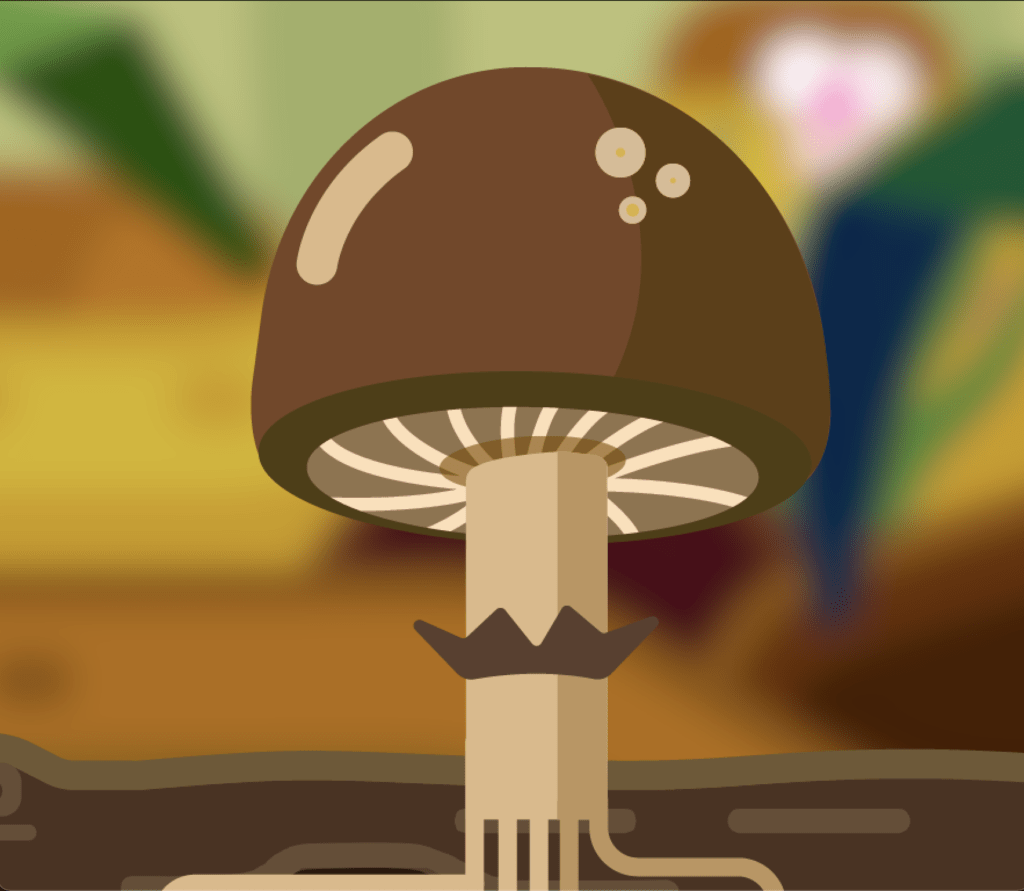Basidiomycetes is the largest and the most evolutionary advanced class of the Kingdom Fungi.
GENERAL CHARACTERS
HABITAT:
• Prefers moist, damp and shady places
• They grow in soil, on logs and tree stumps
• Some are parasitic and grows on the plant bodies
BODY ORGANIZATION:
• Multicellular and loose tissue organization
BODY STRUCTURE:
• Long, slender, thread-like/filamentous body called Hyphae
• The hyphae are branched and septate having barrel shaped septum (cross-wall) called Dolipore septum
• Cell wall made up of Chitin and polysaccharides surrounds the Hyphae
REPRODUCTION:
• Vegetative reproduction – By Fragmentation
• Asexual reproduction by spore formation is usually absent [Exception – Puccinia
• Sexual reproduction occurs but without formation of gametes.
SEXUAL CYCLE OF BASIDIOMYCETES
SPORE GERMINATION
The sexual cycle of Basidiomycetes starts with the sexual spores called Basidiospores. These spores are small, non-motile and are dispersed through wind. Basidiospores are haploid i.e. they have only a single set of chromosomes as these are the product of Meiosis. Basidiospores on finding suitable conditions such as a decaying log of wood starts to germinate. Thin, thread-like and branched filamentous outgrowths start to develop from the spore. These outgrowths are called Hyphae, and a cris-cross network of Hyphae iscalled Mycelium. The mycelium developed from direct germination of the spore consists of only one nucleus per chamber (monokaryon) and represents the Primary Mycelium.
REPRODUCTION
1. PLASMOGAMY
The Primary mycelium can reproduce vegetatively by fragmentation and produce identical copies but when two primary mycelia of different strains or genotypes comes in contact and their cytoplasm fuses. This process of fusion of two somatic or vegetative cells is called Plasmogamy (Somatogamy). However, their nucleuses do not fuse immediately. As a result, a cell is formed having two haploid nucleuses, one from each parent Primary Mycelium. This marks the beginning of the Dikaryon phase (n+n) of the Basidiomycetes.
2. DIKARYON PHASE and BASIDIOCARP
The dikaryon cell now grows and starts to form new hyphae/mycelium called the Secondary Mycelium. Each cell of the Secondary mycelium contains both nucleuses, and this is achieved by formation of specialized structures called the Clamp connections. The secondary mycelium starts to get organized into a structure called the Basidiocarp which represents the Fruiting body of the Basidiomycetes.
The shape, color and size of the Basidiocarp varies in different species of the Basidiomycetes. In the Basidiocarp of Agaricus, the umbrella shaped head is the Pileus which remains erected on a long Stalk. At the base of the Pileus, thin radiating structures called Gills are present and each Gill consists of several small club-shaped structures called the Basidia. Basidia is the site of fusion of the two nucleuses and the process is Karyogamy which results in formation of a diploid nucleus.
3. KARYOGAMY and MEIOSIS
In the Basidia, the diploid nucleus now divides by Meiosis I and followed by Meiosis II which results in formation of 4 haploid nucleuses of different genotypes. Each nucleus is transferred out of the Basidia and is surrounded by small amount of cytoplasm and cell wall to develop into a Basidiospore. Thus, each club shaped Basidia produces a total of 4 haploid, exogenously produced Basidiospores. Each spore can now germinate to develop a new Primary mycelium thus completing the sexual cycle.
EXAMPLES
• Agaricus – Edible Mushrooms
• Puccinia – Causes rust disease of Wheat
• Ustilago – Causes smut disease of Rye
• Bracket fungi
• Puffballs




